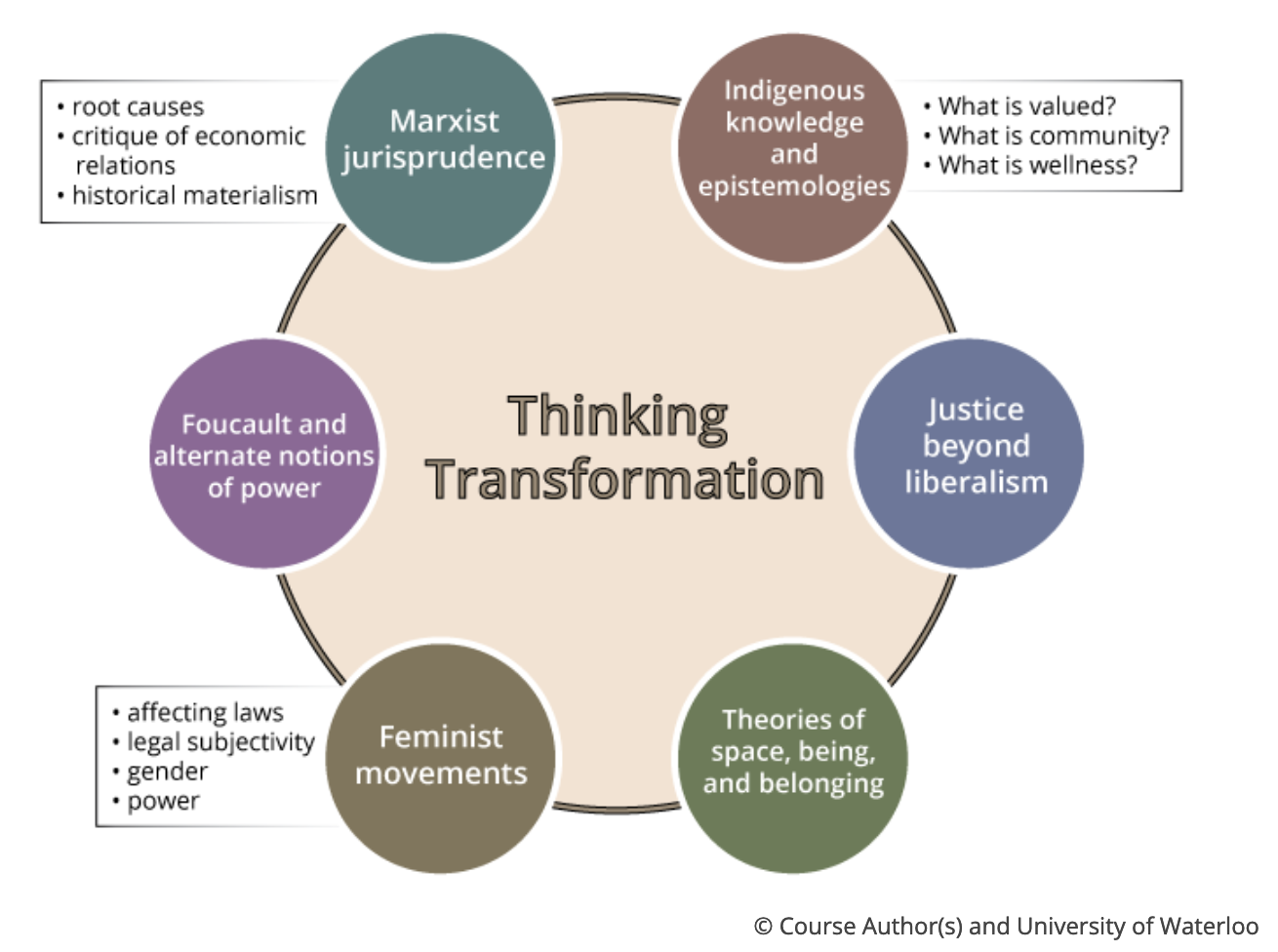The Study of Law: What? Why? Who? Where?
Listen to the song, “I Pity the Country,” by academic, author, and musician Leanne Betasamosake Simpson. I Pity the Country
In our final week’s content, let’s return to the question of law and power. Is law the same as power? Who has power? Is the law solely a tool of the powerful?
Power
Power is maintained through sovereign authority over the production of knowledge. But as we have studied, power is not vested in the state alone. Power moves through social norms—ideas of what is “normal” and what is “abnormal” (see Foucault, Module 2).
Power also lies in subverting strategies of power through knowledge. Knowledges that are subjugated by the dominant normative framework—that prescribes capitalist, colonial, patriarchal norms—hold power by resisting dominant systems and structures of power. Knowledge helps us identify and resist the perpetuation of violence.
Remember that there are different types of violence:
- physical violence (e.g., domestic, war, terror, revolution…)
- economic violence (e.g., inequality, planned misery through structural poverty…)
- systemic and structural violence (i.e., exclusion and oppression caused by systems that determine what is normal against others considered abnormal, whether due to constructs of race, gender, ability, sexuality, linguistics, ethnicity, and so on. Exclusions extend to norms that separate humans from ecological systems interconnected with plants, animals, and all life on earth.)
- epistemic violence (i.e., the privileging of one dominant knowledge/way of knowing, for instance European Enlightenment thought, or neoliberalism. Neoliberalism sees the state and the economic market working together as the primary organizational reference point for societies, priviledging the market and the state above all other knowledges.)
We have seen throughout the past weeks how legal ideas, including what it means to “be free,” what it means to “have rights,” or what it means to “have the law on your side,” can perpetuate epistemic violence. To be free, to have rights, or to be respected by the law, one must subscribe to a particular cultural, economic, and social norm. These norms are not universal but produced, performed, and historically specific.
The critical lens that approaches normative legal structures and systems with awareness to colonialism, race, gender, and capital demonstrates how _the cause is the consequence:
You are rich because you are white; you are white because you are rich.
You are equal because you are male; you are male because you are equal.
You are legal because you are normal; you are normal because you are legal.
Law conditions the possibilities of freedom.
Think About It
Does this thinking make a difference?
Why not stick to Hart and Fuller and Rawls?
What is the use of transformative theories?
“Political responsibility must go hand in hand with legal responsibility”
(Editorial 2009)

"Some believe it is only GREAT POWER that can hold evil in check. But that is not what I have found. I have found that it is the small everyday deeds of ordinary fold that keep the darkness at bay. Small acts of kindness and love."
Gandalf